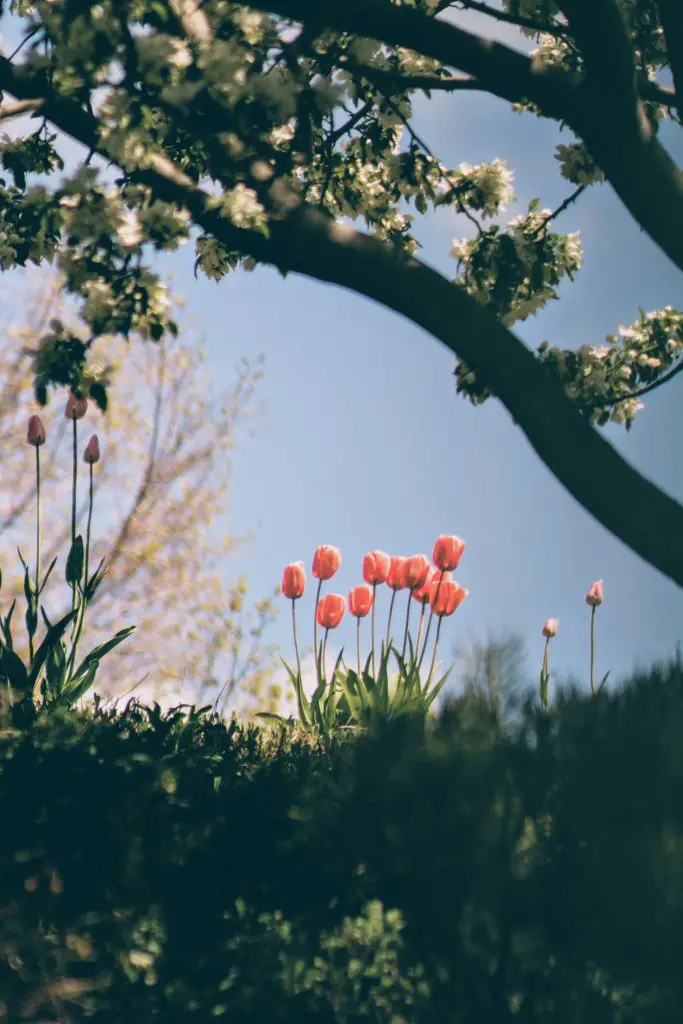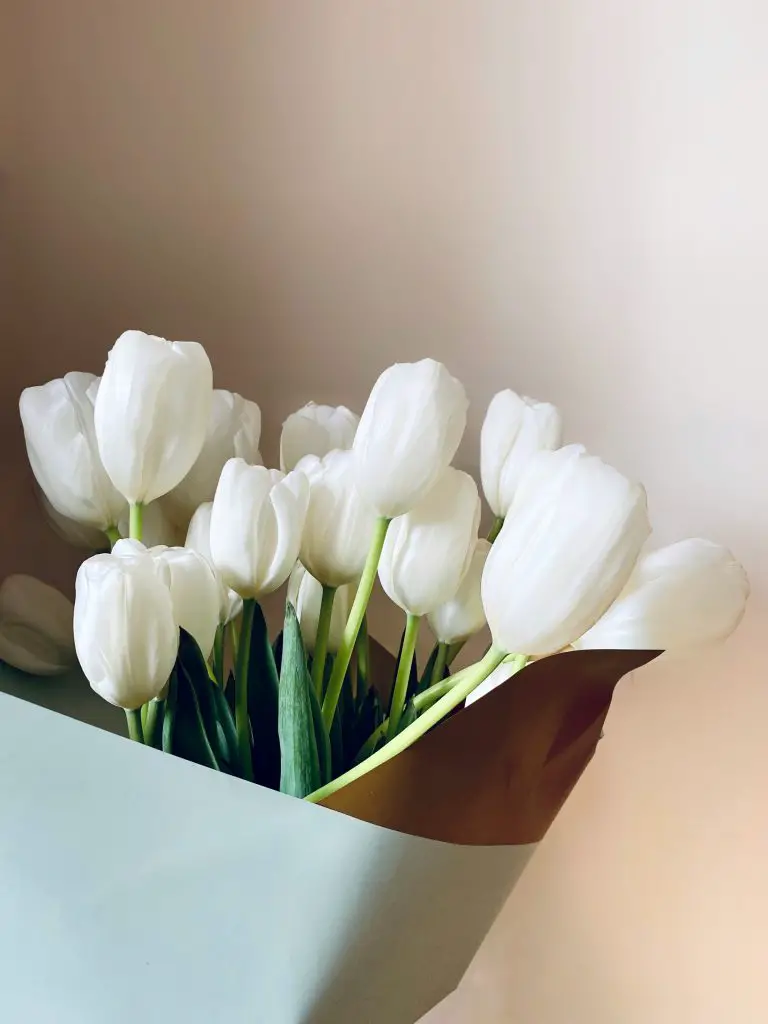Is It Too Late To Plant Tulip Bulbs? Will I Get Flowers The Year? Tulip bulbs are one of the most popular spring-flowering bulbs. Many gardeners plant tulip bulbs to get that early flush of colour in the garden in early spring. To produce a colour traditionally tulip plants are normally planted in autumn, however, if you have missed that window of opportunity in autumn to plant the tulips can you still plant them later in the year? How late is too late?
Tulip bulbs can generally be planted as late as January or even February (in the Northern Hemisphere) if you have forgotten to put them into the ground. However, flowering success is also contingent on the conditions in which the bulbs were stored. If the bulbs have been stored in warm conditions inside it is quite unlikely that they will flower, however, if they have been in a garden shed or outside somewhere where it is cold they will still produce a beautiful display.
However, the other issue that is common in planting tulip bulbs relatively late is the condition of the soil itself outside as it can be either frozen solid at that time of year or extremely boggy and wet. If either of these conditions exists plant your tulip bulbs in pots rather than directly into the ground. As this will reduce the chance of rotting.

How Long Can A Tulip Survive If It Is Not Planted?
If you have really missed the window of planting your tulip bulbs this year then the next obvious question is what can I do with the bulbs now and will they survive until the next season. The answer to this is tulip bulbs can survive for up to 12 months provided that they are stored in ideal conditions.
To store the tulips properly they need to ideally be placed in an area that is less than 40°F (5°C) throughout the year. Additionally, the area in which they are stored needs to be relatively dry to avoid any chances of mould or rotting of the tulips.
As this is a long-term storage process it is also important to ensure that you regularly check the tulip conditions to ensure that there are no problems beginning to develop.

How To Tell If Tulip Bulbs Are Still Good To Plant?
Having stored the tulip bulbs for an extended period of time one of the important things to know is whether the bulbs are still viable. There are some simple tests that can be applied to the Tulips to give you an indication of whether the bulb is starting to deteriorate.
The first indication is simply to look for signs of mold via a visual inspection additionally if the mold is sufficiently advanced your bulbs will begin to smell which is obviously that is a good indication that the bulb is no longer available.
The second way to check the health of a bulb is to simply squeeze it, if it is feeling mushy at all then that is a good indication that the bulb is unlikely to flower.
Another simple test that can be applied is to see if the tulip floats when it’s placed in water. A floating tulip is an indication that the plant is no longer viable.
And finally, if you are still unsure whether the bulb is viable you can also cut it in half and inspect its conditions to ensure that you can still plant the bulb. Despite the fact that it has been cut in half you still need to cut it vertically rather than horizontally to ensure that each half of the bulb has some portion of the basal plate which will ensure that it can be planted in the ground and it will grow.

How To Grow Tulips
Tulips like other spring bulbs are relatively easy to grow. They should ideally be planted in the ground in autumn or early winter, however, if you live in a region where the ground freezes solid I don’t recommend planting in winter as it will be extremely difficult to put the bulb into the ground.
The bulbs should ideally be planted at a depth of approximately 3 or 4 inches deep and they can be placed relatively close together, within an inch or two is fine. However, if you were planting out into the garden and you want to create a natural look one of the techniques that is recommended by Monty Don of gardeners’ world is to simply toss the tulips on the ground and plant them where they land.
Another thing that you can also try is to plant the bulbs into a pot in layers with different types of spring flowering bulbs to get a succession of flowers within the one-pot. To see the order in which different spring bulbs flower we have an extensive list of different types of bulbs flower which you can see by clicking here.
Once the tulips are in the ground it is advisable to mulch the area well to suppress the production of weeds and if you are anything like me and you sometimes forget where you have planted the bulbs it is also a good idea to place a stake in that area to ensure that you do not plant anything else on top of the bulbs. Apart from this there is little else to do other than to wait for the bulbs to appear in early spring.

Once the bulbs produce their flowers there are a couple of things that are recommended that you can do to ensure that you get a fantastic display. The first is to just snapped off the flower heads once the flowers are tied back as this will ensure that the bulb focuses on replenishing the energy stores within the bulb itself.
For this to happen it is important to leave the remainder of the foliage on the plant. However, once it starts to brown you can remove the foliage and cut it back to make things look a little bit neater as there will be little gained in terms of the energy being returned to the bulb at this point in time.
At this stage you can either leave the tulips in the ground or dig them up but that will depend greatly upon two factors which are the climate in which you live and the age of the tulips. If you live in relatively warm climates such as zone 8 or higher it is advisable to dig up the bulbs and store them in your fridge at home as it will usually not get cold enough for the plant to re-flower the following year. By placing them in the fridge you will trick the bulbs into thinking that is in a colder region than it really is.
The second reason to lift bulbs every couple of years is that they do not flower as well as thay get progressively older if they become too crowded. It is advisable to dig them up every few years.
I hope you found this article useful and have great success growing your tulips at home, if you have any additional comments or questions please leave them in the section below.
Relevant Articles
Do Tulips Bloom More Than Once in the Same Season?
What To Do With Tulips After They Bloom?
Are Daffodils Edible? Are They Safe To Eat?
Do Deer Eat Hostas? Can You Protect Them?
